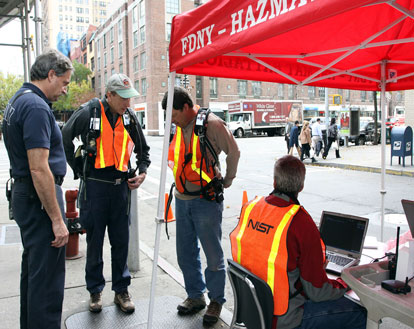
A study funded by the Homeland Security Department could help set new technical standards for radio frequency communication equipment used by emergency responders in complex urban environments. The study is part of an ongoing National Institute of Standards and Technology project, launched in 2008, focusing on the development of “performance metrics and laboratory tests for electronic safety equipment with two-way radio-frequency (RF) transmission capabilities.”
While the investigation focused primarily on the performance of RF personal alert safety systems (RF PASS) used to monitor firefighters entering hazardous environments, the study could have the potential “to be extended to other types of wireless devices that operate in similar environments.”
During the experiment, NIST researchers evaluated path loss, which can occur when signals travel through thick or dense material, in several urban environments throughout New York City. The NIST researchers determined that the wireless emergency equipment tested could be unreliable “beyond the street-level stairwell entrance to a four-level subway station,” while during tests at the Empire State Building, the signal strength of the equipment depended on the frequency in use.
According to William Young, a NIST electrical engineer and an author of the report, the purpose of the testing was to provide data needed for further standards development.
“It was to support the development of test methods on a broader scale,” Young told GCN. “We wanted to make sure that the tests represent the real world conditions that they are going to be working in.”
The National Fire Protection Association (NFPA) has already incorporated NIST’s RF-PASS test methods into its 2013 revision of the 1982 Standard on Personal Alert Safety Systems.
The NIST plans to follow up the New York City study with another round of testing, which will include tests “for reliable voice radio and emergency beacon operations in higher path-loss environments.”
For more information, visit the National Institute of Standards and Technology.





